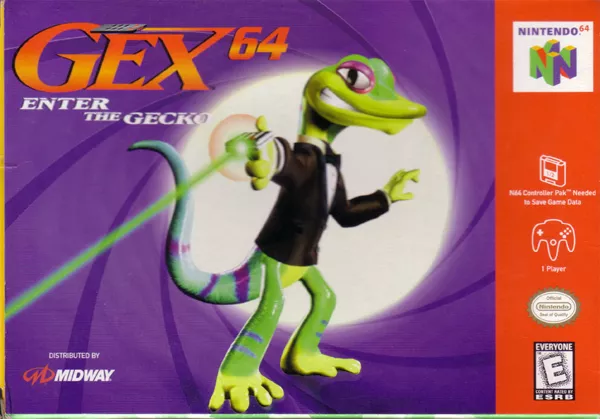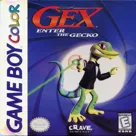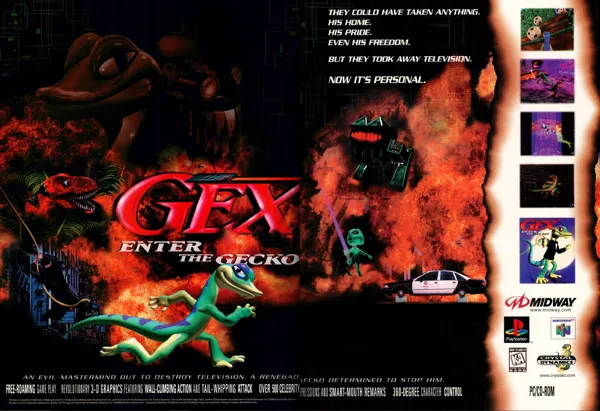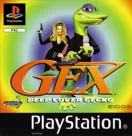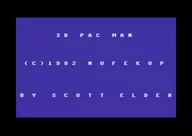Gex: Enter the Gecko
Description official descriptions
Gex 3D: Enter the Gecko is a 3D platform game where the player controls a gecko who has to navigate several levels, all of which are parodies on well-known TV shows and movies, such as Looney Tunes, Gilligan's Island, or Friday the 13th.
Rez, the evil overlord of the television is back into the Media Dimension, and the government asks the TV addict gecko, Gex, to defeat him once again. He gets a lot of money and an agent suit for that. The game generally resolves around a James Bondish spy theme, but the story is not referenced later in the game.
Gex has to enter levels through TVs to collect three types of remote controls in order to unlock more of the Media Dimension, boss levels and secret TVs. Gex can tailwhip or karate-kick his enemies, climb certain walls and ceilings, eat bugs for power-ups, and spout one-liner wisecrack jokes. The gameplay is non-linear, the player can choose from multiple routes and goals on each level, and are replayable anytime after accomplished.
Spellings
- スピンテール - Japanese spelling
Groups +
Screenshots
Promos
Videos
See any errors or missing info for this game?
You can submit a correction, contribute trivia, add to a game group, add a related site or alternate title.
Credits (Windows version)
75 People (67 developers, 8 thanks) · View all
| Director | |
| Producers | |
| Executive Producer | |
| Lead Design | |
| Lead Programming | |
| Programmers | |
| Senior Designer | |
| Designers | |
| Artists | |
| Animators | |
| Stunt Programmers | |
| [ full credits ] | |
Reviews
Critics
Average score: 81% (based on 46 ratings)
Players
Average score: 3.3 out of 5 (based on 53 ratings with 1 reviews)
"Oh no, I'm too young to have a second childhood!"
The Good
The first Gex game was a 2D sidescrolling platformer, starring a TV-obsessed gecko lizard (complete with that rad '90s attitude), and it originally appeared on the obscure 3DO console. Next up followed Gex 3D: Enter the Gecko as the sequel, mainly developed for the PlayStation 1. I would say this one is practically a like remake of the first game, plus so much more! It successfully made the leap into the 3rd dimension, back when this critical move could break franchises and companies. While I am greatly biased toward traditional 2D graphics (the "threedee" usually gave me dizziness and was often unnecessary), this one also improved on the gameplay and polished most everything what the first one did (neither does help that I played them out of order). It was interesting, easy to pick up and play, and bearable enough in its 3D-ness. And so it happened be my introduction to both 3D platforming and the talking game mascot phenomenon, and I am grateful for it!
Let's address the elephant (as in gecko) in the room. Gex likes to make his presence known, he is very vocal. You cannot simply ignore him -- he either makes or breaks the game for you! He is a little gecko with like the massive ego of Duke Nukem, and he tells his wisecrack jokes on his own accord. I happened to enjoy his banter, and I will write down my anecdotal reasons below. It is said that there are 800 voice clips for him (voiced by stand up comedian Dana Gould), so repetition is less of a problem than it was in the previous game.
Beside the talks, Gex got the moves too, for a lizard he is a hyperactive fella. He can run around on two legs. He can jump. He can attack by whipping with his tail. Also can coil it up in mid-jump to spring higher or crush enemies below. He can use his tongue to grab onto ledges or catch flies for power-ups. On his four, he can climb onto walls or ceilings (at least where the game allows it). And there is one more add: a Chuck Norris style flying kick! Which is not necessary to do, newertheless it's looks awesome, whenever you manage to pull itt off. Gex can take five hits before losing a life. But this should not be much of a problem, it is possible to rack up a massive amount of extra lives if you go around exploring. You'll hardly ever see the Game Over screen by just accident.
Flies are Gex's favourite snack. Conveniently, they the provide power-ups! There are color-coded flies trapped in small tube TV sets trough-out the levels. The TV has to be destroyed, and the fly is promtly released, which will then circle around Gex. If we let it follow us, the fly serves as an additional hitpoint (regardless how unhealthy it may look, haha). If we chose to catch and eat the fly, the power-up is activated. A green fly restores a hitpoint. Purple ones give an extra life. Golden and white flies give timed invincibility, in the form of an elemental aura of fire or ice. But this invincibilty is still vulnerable to damage from the opposite element, so for example don't go surfing in lava if you have the icy one. Mid-level checkpoints are also in the same kind of TVs, these show a checkerboard pattern instead a fly.
It shouldn't be a surprise that the levels are themed as various genres of movie/TV shows, and often reference popular media. Some are more cliche and kind of carried over from the previous game (cartoon, haunted house, martial arts, pre-history, etc.), others are a little more unique (computer tech, space sci-fi, espionage, etc.). These are reflected in the look and feel of the environment, cosmetically in the foes and collectibles, more functionally in the types of environmental hazards and interactive elements. Gex's jokes also adapt to the context. On certain occasions, Gex gets an appropriate costume, just for the show (for example like a bunny or duck suit when there are the Elmer Fudd lookalike hunters around).
You don't just progress from one level to the next, they are laid out in a creative and non-linear way, fully taking advantage of the 3D world. Firstly, there is an interactive hub world (the Media Dimension) where you can chose which level you want to enter. The hub world is divided up by giant gates. Gates open up when you have earned the required amound of trophies (in the form red TV remotes) or completed a boss battle. Then you get a new set of levels, while you also don't lose access to the previous ones. When you approach a gate in the hub world not yet unlocked, Rez threatens you, with his booming voice! Secondly, all the levels are - how do I describe it - also kind of a hub in themselves. They have one entry point, but multiple exit points - each earning you a red remote once you pass trough them. The challenge is in either finding your way trough twisted paths to an exit point, or also unlocking them by accomplishing given objectives. You are always given hints regarding specific exits when you begin a level, but you can chose to ignore them and go however you like. There are not all that many levels in the game, but how they are padded out this way, is not bad! Items (aside from already collected remotes) and enemies return each time you start a level, so it's useful when you want to stock up.
The levels are chock-full of collectible items. It is not necessary to mind them, but the reason to collect them is pretty valid. Pick 30 of them up, and they change appearance and location plus you are rewarded an extra life. Then pick 40 up from the second type of collectibles, again they change appearance plus extra life. Pick up 50 of the third type, and you are rewarded with the level's white remote controller! But that is not all! There are also hidden white remotes on each level to search for. White remotes remotes unlock bonus and secret levels, which provide golden remotes. If you finish the game with every possbile remote contorller collected, you get a bonus ending!
The levels are inhabited by various unfriendly creatrues. As platform game foes they usually do not pose much of a threat, unless the danger is getting kicked off from your path. The ninja ones though are pretty cool for regular enemies, and put up a good fight! The occasional boss battles are all mind-numbingly simple tasks, where you're letting the enemy get hurt by their own traps/attacks. On the plus side, these happen in epic set pieces. My most favourite event in the game is the giant monster fight with Gexzilla against Mecha-Rez! While the goal is to let Mecha-Rez fall off a building a set number of times (it wants the "high ground", haha), you actually get engaged in combat here. Skyscrapers collapsing, tiny tanks and helicopters trying to interfere and getting wrecked, good stuff.
I like how the game progresses. Initially, you get to chose between a bouncy cartoon level or a scary haunted house level, all with the right amount of zanyness. They are good, appealing starting levels (which is a big improvement compared to the first game). The world gradually opens up as you complete tasks and collect the remotes, giving access to more complex, varied, colorful levels. Well into the game, you could notice on some skyboxes that the 'air' is torn, revealing metal scaffolding and blinking lights. Finally, when reaching the last few levels of Rezopolis, they are unsettling places compared to the kid friendly rest of the game. Dark industrial setting and occasional brainscapes, clusters of TVs showing random stuff, deadly pools of bubbling white noise, dirty old robotic and bio-mechanical creatures, menacing industrial techno music. AWESOMENESS. And then, there is Rez himself. One of the most badass looking video game villains ever! Creepy bio-mechanical abomination sporting a rocket booster instead of legs, with a terrifying voice to match.
And now, some technical comparisons between the Windows port and the PS1 original:
-The graphics, is identical between the two. Most thing is pretty low-poly but textured, the collectible items are sprites. The draw distance is pretty short, and the game hides it by either taking place in rooms, between cliffs, or showing fog. It doesnt look bad, altough I miss that there are no graphics settings to tweak with, but that's how console-to-PC ports often are. Like, stuck in time to when they were released, to the capabilities of the PS1, or Pentium 1 PCs with an early 3D accelerator card, in a resolution of 640x480.
-On the front of sound, there are notable differences. The PC version lacks some presentational sound ditties. And the background music, while the themes are mostly the same, they work completely different. On the PS1, the music is built up from bit-crushed sound samples and is mixed in real time, allowing the music to follow the events, actively reacting of the gameplay. On the other hand, the PC version takes advantage of the "Redbook" audio capabilities of the CD-ROM, and thus it is in much higher quality. This also means that the music is hard-mixed and passive -- one type of level, one soundtrack to it. By the way, the music is mostly like off-brand instumental/"MIDI" rendition of famous themes approriate to the level. Where it truly stands out are the techno songs, those sound like genuine pieces of their time, and true bangers!
-Saving: The PS1 version has the possbility to save your progress on a memory card. Or if you lack one, then it offers a "password" combination (of the PlayStation symbols) that vaguely reflects your progress. On the PC version, you alway have the convenience to save your game to the hard drive, so no juggling with passwords. All this only works when you are back at the hub world.
-Controls: The PC version can be controlled both with a gamepad (of at least 4 buttons), or with keyboard. The keyboard controls register flawlessly, and can be re-defined (all unlike the PC port of the first game, I don't know how they messed that up).
The Bad
If there is one flaw to moan about, is how the "camera" (your view to the game world) is behaving. It is prone to get stuck on the walls, or to face the wrong direction away from the action. This was a common problem for early 3D games with a third person perspective, back when game developers haven't quite figured out everything yet. Can't say that they didn't try in Gex 3D: there are even three modes of operation you can select from, right at the pause menu. There is an automatic, a half automatic, and a manual modes. The latter lets you flat-out control the camera with dedicated keys. Neither mode is perfect, there are places where one works better than the other. It is at least not a game breaking problem, you have to learn to deal with it.
There is a seizure hazard in the PC port. That is, when you activate a mid-level checkpoint, the screen flashes white, like you are supposedly being photographed. But this effect is somehow borked, as it's not just a little flash, more like you flash grenade yourself! The entire screen suddenly goes FULL WHITE, and stays that way for a few seconds, then fades back. Now, I don't have epilepsy, but every time that happens and I got suckered into it or forgot to look away, it feels like my eyes have been destroyed and mind has been wiped blank. Not cool.
In other news, Gex can climb onto walls and ceiligs, you know, like geckos do! It's a gameplay mechanic that makes the new 3D game world all that much more... free, and complex, and interesting (also potentially more confusing, dizzifying, and whatnot) ...Except you don't really get much walls that can be climbed. Only distinguished textures are climbable, and they were used on sparse occasions. Why I bring it up here is that, compared to the previous game, it feels like a step back. In (the 2D) Gex 1 you could climb most walls anywhere, which was a major feature. I think I understand why the game designers chose to deal with it the way they did here. But in case a new Gex game would get ever made, I would be dissappointed if they would not integrate the full freedom of wall climbing into the engine and gameplay.
Another thing to chalk up, are those darn space themed levels. They are very hard from the special circumstances: they are basically an open bottomless pit with little bits of floating -often moving- platforms and debris; plus you are limited on oxygen and have to look out for air supplies; with leeching enemies around that can drain your air quicker. Any sense of wonder that this fantastic new frontier invokes is quickly replaced with dread and anger. In Space, no one can hear you cursing for the frequent deaths! This is where your extra lives are guaranteed take a massive drain. Add in the fact, that these levels are some of the trickiest to navigate aswell, and it's guaranteed that you will spend a long time on them. Yeah, it's an intended part of the challenge relatively late in the game. Still, I can hate on it!
Additionally, let me rant about the European dub (which is technically what's appropriate to where I live). What was the point of changing the voice actor, and to such an inappropiate voice? With it he sounds like an old man talking slowly, just reading in some lines in the most flat way possible. Not very fitting for a hyper-active bouncy gecko. I guess the idea was that the brits wanted a suave, sort of Sean Connery impersonation (because of the slight Bond theming), but it doesn't work! I've heard people preferring this dub because "it's less annoying". To me feels like, without the voice of Dana Gould, it's a whole different game lacking Gex himself!
The Bottom Line
I guess now I have to explain why I like Gex in the first place.
Some time ago, I was on the lookout for old Windows 95 era games, to try on my Pentium 1 trash of a PC. I vaguely remembered seeing a game at a relative's place, where a reptile thing was running around (which later turned out to be the demo of Croc, but whatever). So I downloaded "this" game, started up, got to a level, Gex materialized in the playfield out of poligons (it's a teleport effect it does). And when I wanted to take control, suddenly Gex looked back and said something silly. And I was like "Whuuut? Ya bastard, haha!". I was not used to a videogame character talking on its own (yeah, Duke Nukem 3D did it earlier, but at that time I didn't have a sound card). Did I just got adopted a Digimon partner or something? It was cool. And so this was a game where it didn't feel like the playable character is just an avatar for me. It's WE are that are doing it, getting the evil rid of this digital world... or something. There is some paper thin plot implied in the intro video, but it's easily ignorable. A hyperactive little gecko, with an ego on level with Duke Nukem, it was endlessly funny to me, in an ironic and endearing way.
I don't like to admit it, but this was around high school years, and I had no friends, so yeah, quite an uncomfortable time. I hate to write all this sentimental cr@p down, but without it, all this text would have no menaning. Gex buddy, you lovable little dork, I would hug you if I could!
Windows · by 1xWertzui (1134) · 2024
Discussion
| Subject | By | Date |
|---|---|---|
| N64 vs PSX level count? | Alaka (110694) | Dec 4, 2024 |
Trivia
Japanese release
In Japan, the game was released only on Playstation by Bandai, as Spin Tail. Gex was renamed to Reno and the setting was changed unrelated to the first game. It also featured a very different, peculiar box art compared to the western releases. Unlike the previous title, this got a full Japanese voiceover by anime voice actor Mitsuo Senda. This is the last game in the Gex series that got released in Japan.
References
As can be expected from a game with this premise, it contains numerous parodies on movies and series like Friday the 13th, Star Wars, Flinstones, James Bond, Mission Impossible and No Weddings and a Funeral.
Voice actor change
In the North American releases Gex is voiced by HBO comedian Dana Gould, while the European releases feature the voice of British comedian Leslie Phillips.
Awards
- EGM
- 1999 Buyer's Guide - Best Reason to Use a Mute Button
- PC Player (Germany)
- Issue 01/1999 - Best Platforming Game in 1998
Analytics
Identifiers +
Contribute
Are you familiar with this game? Help document and preserve this entry in video game history! If your contribution is approved, you will earn points and be credited as a contributor.
Contributors to this Entry
Game added by Erwin Bergervoet.
PS Vita added by GTramp. Nintendo 64 added by Kartanym. PlayStation added by Grant McLellan. PSP, PlayStation 3 added by LepricahnsGold.
Additional contributors: Corn Popper, Alaka, gamewarrior, Ace of Sevens, j.raido 【雷堂嬢太朗】, Cantillon, Patrick Bregger, Tobias Küper, Plok, 1xWertzui.
Game added October 14, 2000. Last modified December 7, 2024.


